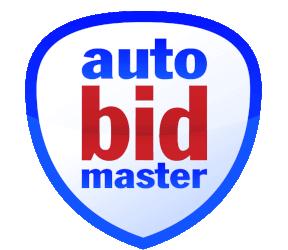Owning a classic car without being able to drive it is no fun, but as an owner, you need to understand that not all of them are built to perform in today’s motoring conditions. Cars are required to comply with changing road regulations, technologies, lifestyles, and driving needs. Therefore, if you own a vintage set of wheels, it is important to ensure that your vehicle receives regular maintenance and is always ready to hit the road. To help, in this post, we discuss seven simple classic car maintenance tips.

1. Overheating
Overheating is one of the most common issues in classic cars, as most of them lack advanced cooling systems. There are many reasons for overheating, but thankfully, there are many ways to fix it. In fact, in some cases, you can fix the problem the DIY way. Possible causes of overheating include:
- Low coolant level
- Defunct cooling fan
- Broken fan belt
- Malfunctioning thermostat
- Clogged radiator pipes
To keep your vintage car road ready, ensure that coolant is filled to the required level and you have it periodically inspected by a reliable mechanic. If there is a faulty part, always go for a genuine spare.
2. Brake Malfunctions
Brake maintenance is essential to ensure your safety behind the wheels. No matter drum or disc, every braking system has a lifespan and must get inspected periodically. Unlike contemporary cars, vintage cars usually don’t have brake warning lights, because of which it becomes difficult to tell the current status of brake system. The brake pads wear out depending on the miles traveled and usage, and to prevent a premature replacement, make sure the brake liquid is always filled upto the prescribed level.
3. Pest Infestation
Although pest infestation in cars may sound bizarre to many, it is another common problem in vintage cars as they are often left unused for extended periods. In addition, food crumbs, gaps in worn out door seals, missing car accessories, and climatic conditions also lead to pest infestation. If you notice any sign of infestation, you can choose from numerous pest control products especially formulated for automobiles. In addition, you must also get the car inspected properly for any openings in its body, which may provide an easy access to pests.
4. Electrical Malfunctions
Every car is equipped with several electrical components that route the power to different parts of the body and controls. A typical electrical system comprise of a battery, starter, and alternator. Batteries usually last for 3 to 7 years, depending on usage. In case of vintage cars, especially the used ones that you buy from classic car auctions, it makes sense to have your car’s electrical system checked and get the battery replaced, if required. The mechanic can perform an electrical system check to ensure everything is working properly.
5. Engine Breakdown
Old engines are often vulnerable to damages, if run with burnt engine oil for long enough. Engine oil lubricates the engine’s internal moving parts, minimizing wear and tear. Make sure you check the level of the engine oil of your classic after about 2000 miles. All you need to do is pull the dipstick out from the engine and wipe off any oil from its surface. Then, again insert it into the cavity and pull it out. This time, check the texture if the oil on the end of the stick. Every dipstick has a standard level mark mentioned on it, such as letters L and H, or the words MIN and MAX, or two pinholes. If the quantity of oil is not adequate , you know what to do.
6. Paint Chipping or Fading
Whether you have restored your classic or drive it “as is”, never use any harsh cleaning agents in hopes of making it “as good as new” – which a lot of marketers claim. Cleaning agents with harsh compounds take away the natural sheen of the paint and may also render the chrome parts lifeless. In fact, using a dry cloth to clean dust is also unadvisable, as dust particles also have the same effect on the appeal of your car. Always park the car in shade and when you think it is not looking its best, simply hose off the dirt or take it for a car wash and was. Use pH balanced car wash soap (preferably pH 7) and a car-wash mitt or sponge.
7. Wheel Bubbling and Vibrations
Wheel alignment and balancing is crucial for old cars, especially if they have undergone major repairs, modification, or restoration. Keeping the wheels aligned and balanced, in addition to being a prerequisite for a smooth drive, also ensures optimum lifespan of tires. It also improves the handling of the car when driving down the road, preventing your car from pulling in one direction or vibrating strangely on the road. If you notice bubbling, or your car keeps drifting to one side without your intervention, make sure you get the alignment checked by a wheel specialist. Based on the issue, the expert may suggest alignment or balancing, or both.
The Bottom Line
Whether you have recently invested in salvage muscle cars for sale or inherited a vintage vehicle that’s been parked in your garage since pretty much forever, its proper maintenance is a must to keep it up and running. Even the collectors with no intention of hitting the road with their classic look for cars in running condition. Though a DIY approach is one way to go about repairs and maintenance, going for professional help makes a world of difference. Professionals are ideally placed to repair and maintain your vehicle to keep it running, lower upkeep costs, and help comply with the laws regarding vehicle fitness and licensing. Hope the read helps.
- Is Buying a Hail Damage Car Worth It? A Detailed Guide - December 2, 2024
- Affordable Luxury: The Best Budget Luxury Cars for Families in 2024 - November 21, 2024
- How to Lookup a Motorcycle’s VIN Number - November 14, 2024





